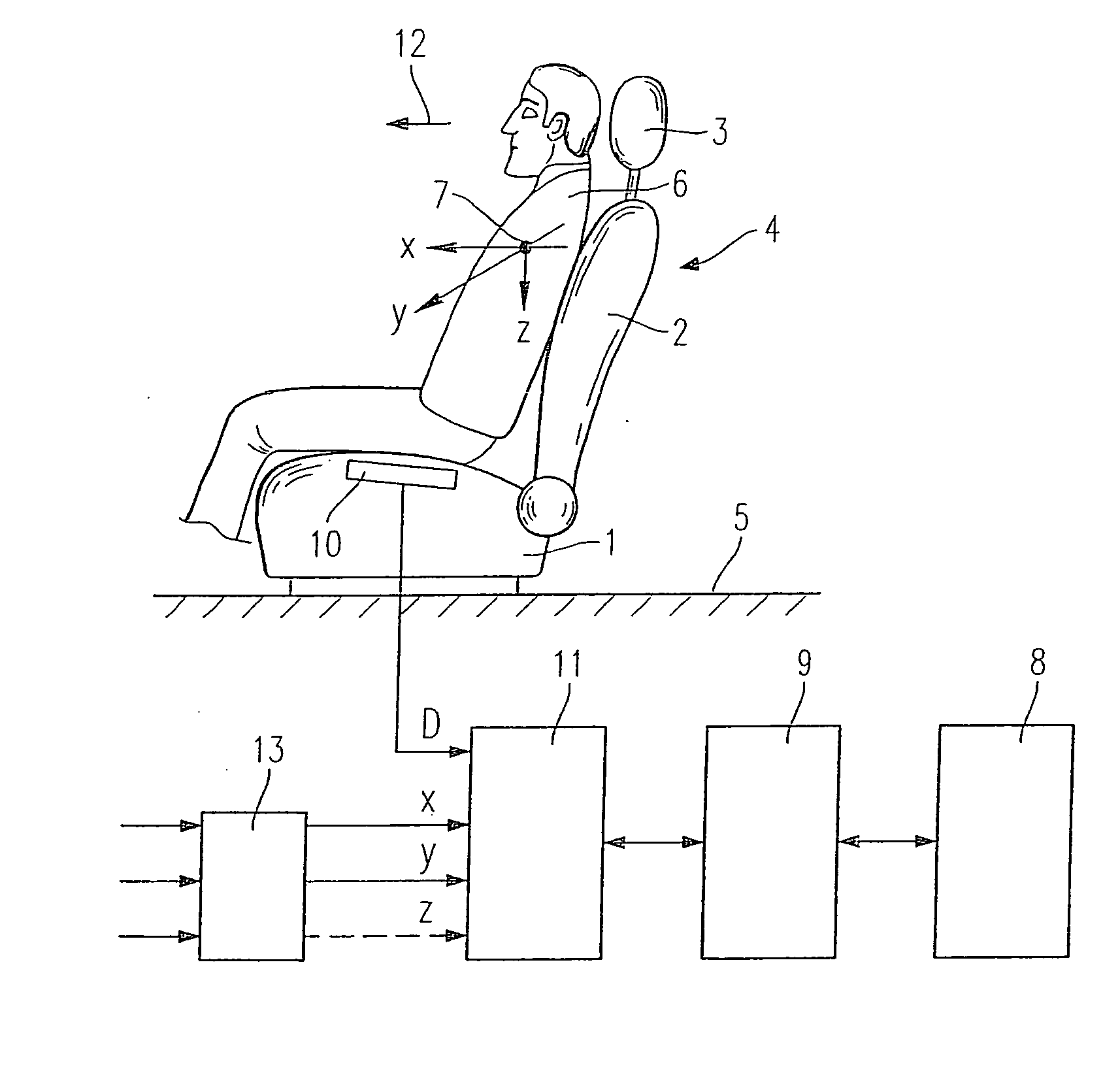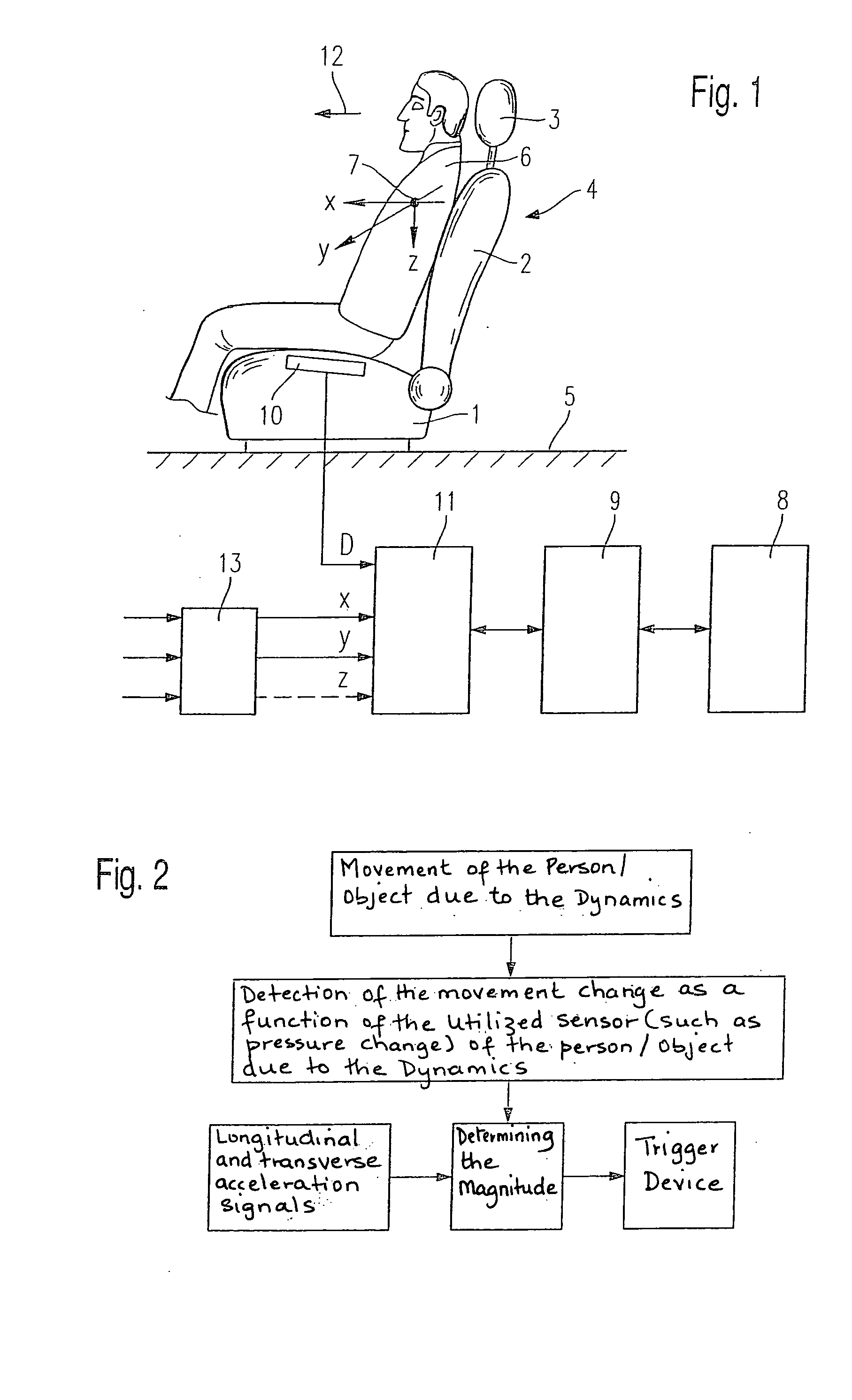Method and arrangement for the classification of objects occupying a seat
- Summary
- Abstract
- Description
- Claims
- Application Information
AI Technical Summary
Benefits of technology
Problems solved by technology
Method used
Image
Examples
Embodiment Construction
[0015]FIG. 1 shows a seat 4 made up of a seat cushion 1, a backrest 2 and a head restraint 3, the seat being located in a schematically shown motor vehicle 5. Furthermore, FIG. 1 shows as an object a person 6 seated in seat 4 and schematically shows center mass 7 of this person 6. In a manner known per se, seat 4 is assigned restraint systems so as to protect person 6 in the event of an accident or some other dangerous situation. Irreversibly triggerable restraint systems 8, such as airbags, pyrotechnically ignitable seat-belt tighteners and the like, are schematically illustrated by a block. These restraint systems 8 are triggered or fired via a triggering device 9 as soon as a dangerous situation for person 6 must be assumed on the basis of recorded and ascertained criteria.
[0016] As is generally known per se and will not be discussed in more detail, it is initially ascertained whether seat 4 or its seat cushion 1 is occupied in the first place, for no triggering of restraint sys...
PUM
 Login to view more
Login to view more Abstract
Description
Claims
Application Information
 Login to view more
Login to view more - R&D Engineer
- R&D Manager
- IP Professional
- Industry Leading Data Capabilities
- Powerful AI technology
- Patent DNA Extraction
Browse by: Latest US Patents, China's latest patents, Technical Efficacy Thesaurus, Application Domain, Technology Topic.
© 2024 PatSnap. All rights reserved.Legal|Privacy policy|Modern Slavery Act Transparency Statement|Sitemap


